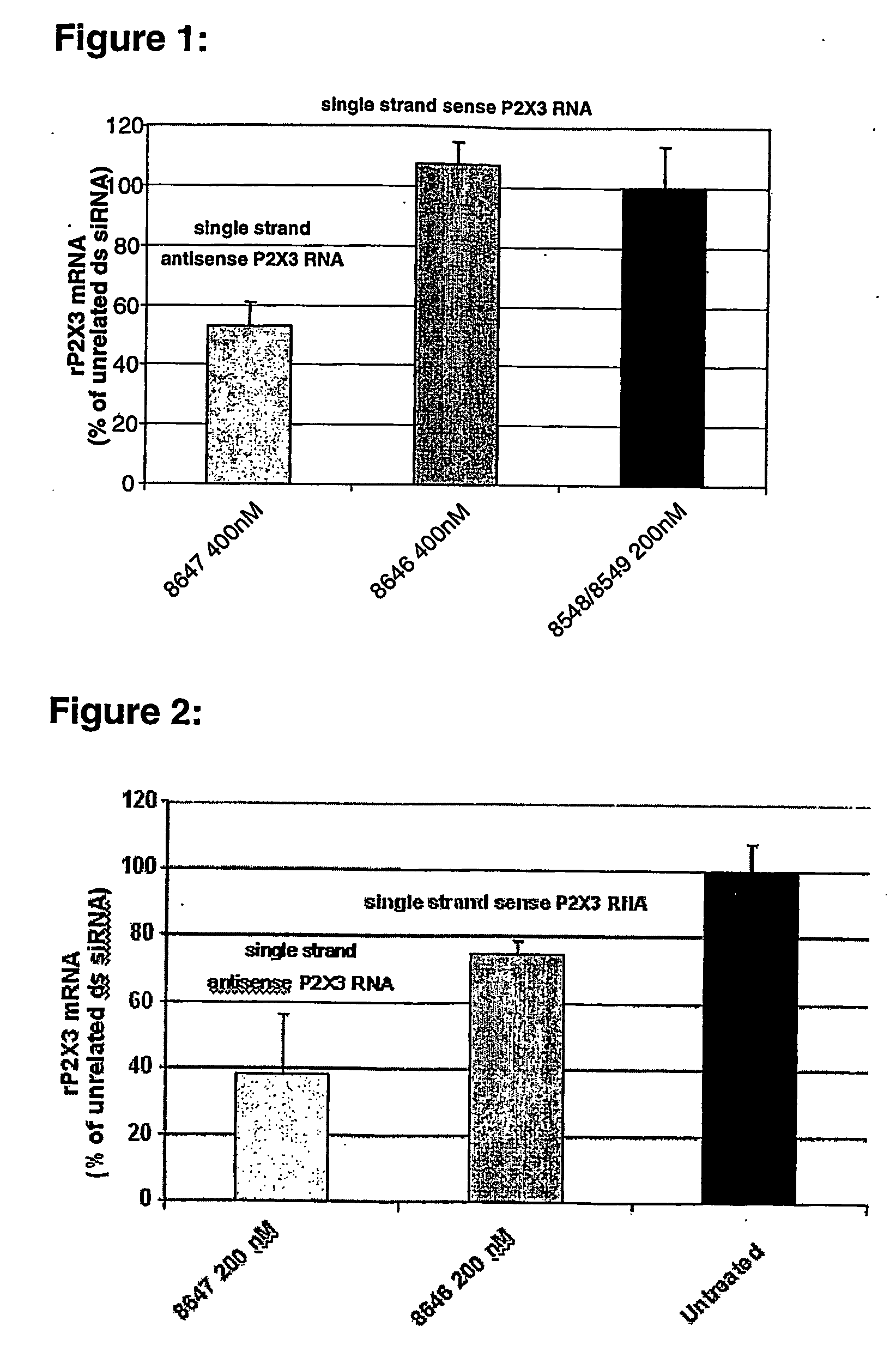Down-regulation of target-gene with pei/single-stranded oligoribonucleotide complexes
a single-stranded ribonucleotide and target gene technology, applied in the direction of peptide/protein ingredients, genetic material ingredients, biochemistry apparatus and processes, etc., can solve the problems of low efficiency of ssrna as compared to dsrna, inefficient spontaneous uptake of nucleic acids, and inability to express target genes. to achieve the effect of inhibiting the expression of a target gen
- Summary
- Abstract
- Description
- Claims
- Application Information
AI Technical Summary
Benefits of technology
Problems solved by technology
Method used
Image
Examples
examples
Materials
[0050] JetPEI™ was purchased from Polyplus-Transfection (CatNo 101-10). It consists of a linear polymer delivered at a concentration of 7.5 mM (expressed in nitrogen atoms).
Cell Lines
[0051] Stably transfected Chinese hamster ovary cells (CHO-K1) (ATCC CCL61, Rockville, Md.) expressing recombinant rat P2X3 were generated as previously described (Dorn et al. 2001). Cells were cultured in minimal essential medium (MEM-α) supplemented with 10% (v / v) FBS, 2 mM glutamine and 10000 IU / 500 ml penicillin / streptomycin in a 5% CO2-humidified chamber.
Oligonucleotide Synthesis
[0052] Oligoribonucleotides for siRNA experiments were synthesized using TOM-phosphoramidite chemistry, as described by the manufacturer (Xeragon) and purified by RP-HPLC. Purity was assessed by capillary gel electrophoresis. Quantification was carried out by UV according to the extinction coefficient at 260 nM.
[0053] Annealing of dsRNAs was performed as described elsewhere (Elbashir et. al., 2001). Oligon...
PUM
| Property | Measurement | Unit |
|---|---|---|
| molecular weight | aaaaa | aaaaa |
| volume | aaaaa | aaaaa |
| volume | aaaaa | aaaaa |
Abstract
Description
Claims
Application Information
 Login to View More
Login to View More - R&D
- Intellectual Property
- Life Sciences
- Materials
- Tech Scout
- Unparalleled Data Quality
- Higher Quality Content
- 60% Fewer Hallucinations
Browse by: Latest US Patents, China's latest patents, Technical Efficacy Thesaurus, Application Domain, Technology Topic, Popular Technical Reports.
© 2025 PatSnap. All rights reserved.Legal|Privacy policy|Modern Slavery Act Transparency Statement|Sitemap|About US| Contact US: help@patsnap.com


